Physical Address
304 North Cardinal St.
Dorchester Center, MA 02124
See on ExpertConsult.com .
Since the first implantation of a left ventricular assist device (LVAD) by Dr. Michael DeBakey in 1966, the search for durable short- and long-term mechanical support has resulted in a myriad of devices and expanded indications. Targeted funding by the National Institutes of Health (NIH) and industry has resulted in several innovative technologies with which the surgeon must be familiar in order to recommend appropriate mechanical support therapy, when indicated.
As waiting times for transplantation lengthened, clinical experience was gained with various devices. Today, pulsatile and nonpulsatile mechanical circulatory support devices are increasingly being used as bridges to transplantation and as destination therapy. The ReMATCH trial has shown that LVADs have a permanent place as destination therapy in end-stage heart failure. In this chapter, we describe techniques used for the implantation of various common devices for temporary and durable ventricular support in heart failure.
The anatomy of pump insertion is similar for most devices discussed in this chapter. The inlet cannula of both externally and internally placed LVADs is usually implanted in the left ventricular apex. The diaphragmatic surface of the left ventricle between the ventricular septum and the origin of the papillary muscles for the inlet cannula or pump can also be used ( Fig. 32.1 ). This convenient flat space is particularly suited for implantation of small centrifugal force pumps and intraabdominally placed axial flow pumps.
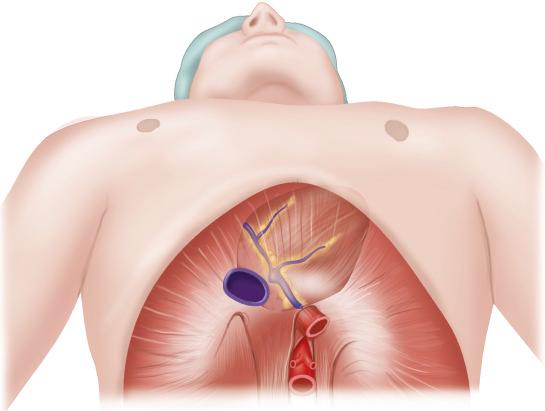
Temporary ventricular assist devices are typically used in the setting of acute left or right ventricular dysfunction or for univentricular support for interventional procedures. Devices are available that can be placed percutaneously via open vascular exposure or via mediastinal access. Temporary ventricular assist devices can be deployed rapidly in various clinical locations (e.g., intensive care unit [ICU], operating room [OR], or catheterization laboratory). A variety of devices are commercially available, including the Impella (Abiomed, Danvers, MA) series of left and right ventricular assist devices that provides temporary axial flow support in a low-profile device. The Impella 2.5 and Impella CP ( Fig. 32.2 ) can be inserted percutaneously, or the higher flow Impella 5.0 ( Fig. 32.3 ) can be inserted via right axillary or femoral cut-down for higher flows. The newly released Impella RP ( Fig. 32.4 ) is intended for right heart support via percutaneous venous access. Numerous extracorporeal centrifugal pumps (e.g., CentriMag [Thoratec, Pleasanton, CA] or Tandem heart) are available for left and/or right ventricular support ( Fig. 32.5 ). We currently prefer to use the CentriMag in our institution because of its relative ease of use and the ability to splice in cardiotomy reservoirs for transfusion, oxygenators, and renal replacement devices. There is an ever-increasing number of patients who present with acute, acute on chronic, or chronic heart failure that require temporary or durable mechanical circulatory support. This chapter provides an overview of the major temporary and durable ventricular assist devices that are currently available. Descriptions of the indications and implantation techniques are outlined.
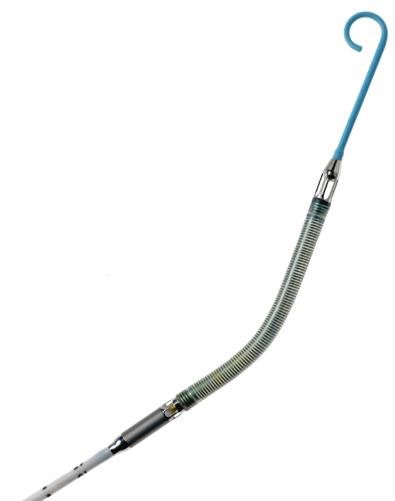
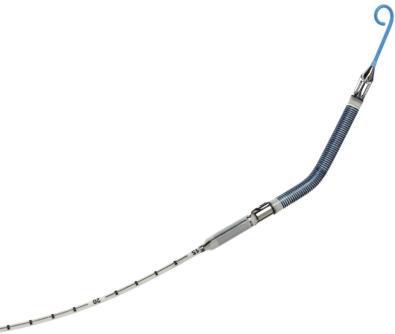
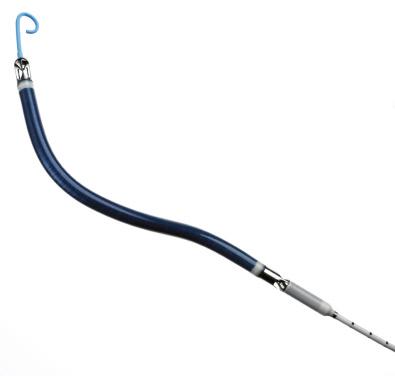
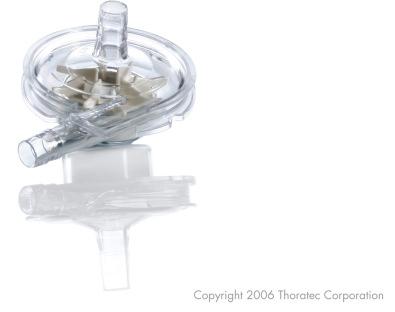
For long-term implantable support, the HeartMate II (Thoratec) and HeartWare HVAD (HeartWare, Framingham, MA) are the two current continuous-flow devices that are most commonly used. The HeartMate II ( Fig. 32.6 ) is an axial flow pump requiring implantation in the abdomen, whereas the HeartWare HVAD ( Fig. 32.7 ) is a centrifugal pump that is implanted within the pericardium itself. Other implantable LVADs are also available either commercially or on a trial basis.
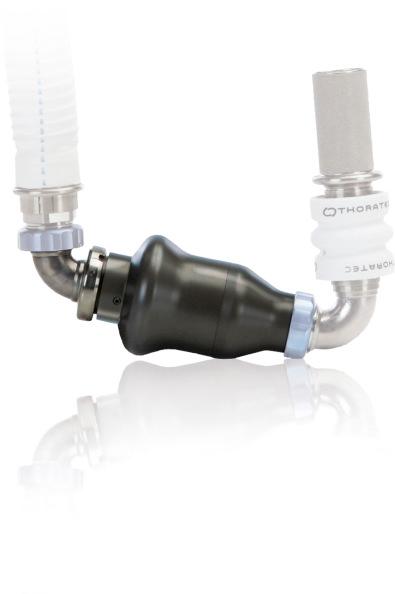
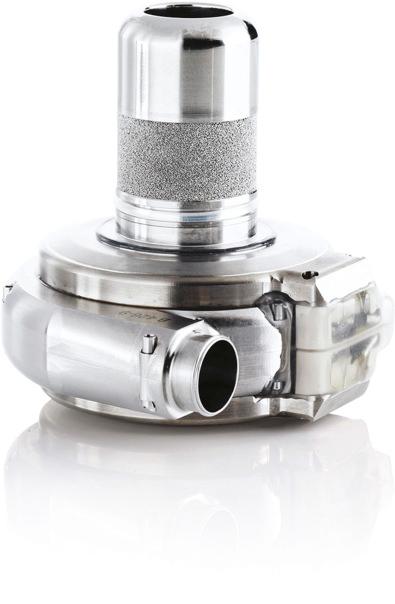
The Impella 2.5 and Impella CP devices are regularly inserted using a percutaneous access technique either in the cardiac catheterization laboratory or the OR. Femoral arterial access is obtained using the Seldinger technique, the artery is dilated up, and a tear-away sheath is placed. The Impella device is then inserted after priming, guided into the left ventricle, and positioned across the aortic valve under fluoroscopic and/or echocardiographic guidance. After adequate positioning is obtained, the automated controller is activated, and an appropriate power level is selected for the desired cardiac output.
Insertion of the Impella 5.0 is performed via either a femoral cut-down technique with direct arterial cannulation or, more commonly at our institution, an axillary artery cut-down technique ( Fig. 32.8 ). We prefer to place an 8- to 10-mm tube graft on the axillary artery with 4-0 polypropylene sutures and cannulate the graft with the Impella 5.0 device. The device is then advanced and positioned as previously described using intraoperative fluoroscopy and echocardiography. We prefer to close the cut-down site with layers of interrupted sutures to help prevent bleeding and infection while the device is in place.
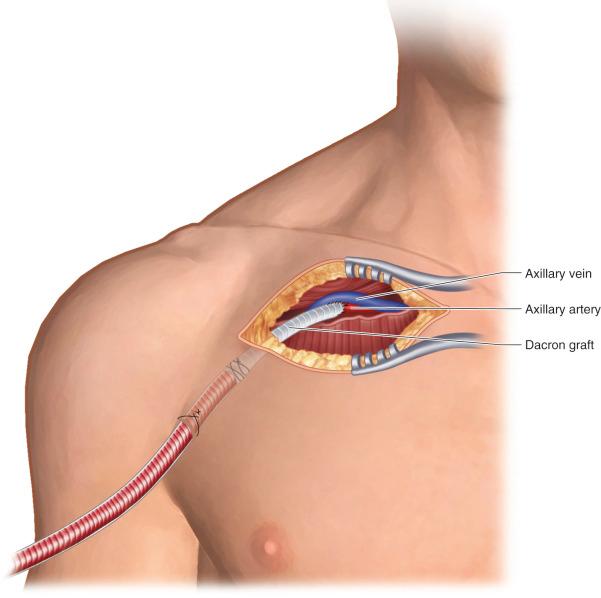
If short-term temporary right ventricular assist is needed, the new Impella RP device can be placed percutaneously for right ventricular assistance. The device is advanced from the femoral vein up through the inferior vena cava (IVC) and positioned with the tip of the device in the main pulmonary artery under fluoroscopic and echocardiographic guidance.
The CentriMag is a versatile temporary support device that lends itself to several cannulation configurations, depending on the clinical circumstances. For left ventricular support, we prefer to cannulate the left ventricular apex for the inflow portion. For postcardiotomy support (or for those undergoing sternotomy for implantation), we graft the ascending aorta for the outflow. For patients requiring LVAD support for cardiogenic shock who otherwise do not require sternotomy, we routinely perform a left thoracotomy for cannulation of the apex; the outflow graft is constructed using a right axillary artery cut-down. For the inflow in either circumstance, the apex of the left ventricle is elevated, and two circumferential purse-string sutures of 2-0 Teflon polypropylene are placed. In general, a site should be chosen that will center the cannula tip coaxial to and in the center of the left ventricular cavity. The size of the drainage cannula should be chosen based on the patient's size. The cannula is tunneled out of the chest through a subcutaneous tunnel, ensuring that there is no kinking of the tubing. The cannula tip is inserted into the left ventricle through a cruciate incision and secured by purse-string sutures to the cannula. Securing the inlet cannula in position is critical to prevent cannula dislodgment, which can result in bleeding and the development of a catastrophic air embolus during pumping. Transesophageal echocardiography is used to confirm acceptable inlet cannula position.
For patients undergoing sternotomy, a partial aortic clamp is applied to the aorta in a location devoid of calcifications and plaques. A 10-mm tube graft is placed in an end-to-side fashion. The anastomosis is performed to the ascending aorta with 4-0 polypropylene sutures.
If the left thoracotomy approach is used for inflow cannulation, the right axillary artery is exposed for outflow grafting. After isolating the axillary artery, a 10-mm graft is sewn to the artery in an end-to-side fashion, and the CentriMag circuit is attached directly to the graft and secured with several silk ties and sutures. The graft is either tunneled via a separate incision or through the cut-down incision, depending on the orientation of the graft to avoid kinking. To limit overflow to the ipsilateral arm, a snare is adjusted to maintain a mean arterial pressure (MAP) of 70 mm Hg in the ipsilateral arterial line. We then close the incision in layers temporarily to limit bleeding and infection risks.
If right ventricular assist is needed, we prefer to use a percutaneous dual-stage venous cannula placed via the femoral vein under echocardiographic guidance. This provides excellent drainage of the right atrium; if additional drainage is needed, a percutaneous superior vena cava (SVC) cannula can be placed via the right internal jugular vein. We perform a sternotomy and place a 10-mm tube graft on the right pulmonary artery, directly between the SVC and the aorta, using 4-0 polypropylene sutures ( Fig. 32.9 ). We have found that this position of the outflow graft provides good flow dynamics bilaterally and minimizes pulmonary regurgitation. It is also readily exposed via this approach.
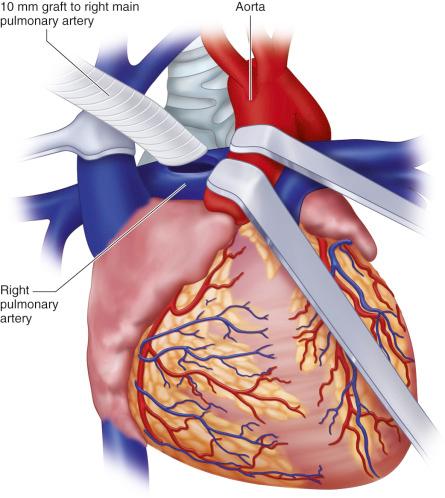
Removal of the device is straightforward in each of the previous approaches. For the graft sites, we simply use a GIA stapler to staple off the grafts and then oversew using 4-0 polypropylene sutures.
Become a Clinical Tree membership for Full access and enjoy Unlimited articles
If you are a member. Log in here